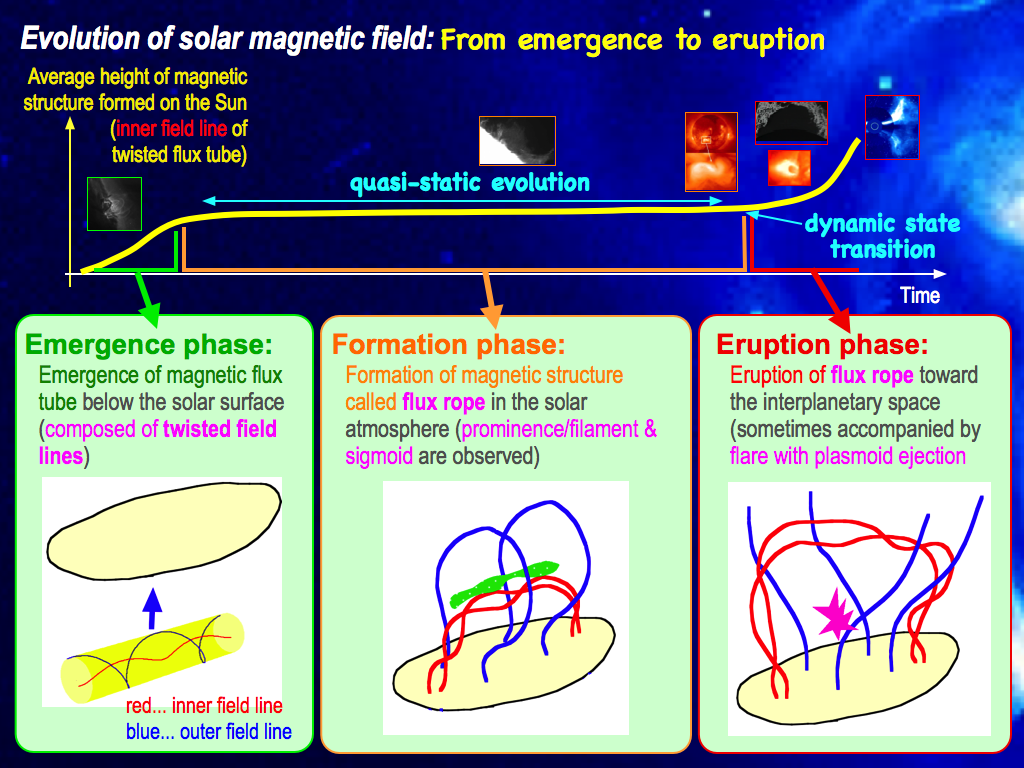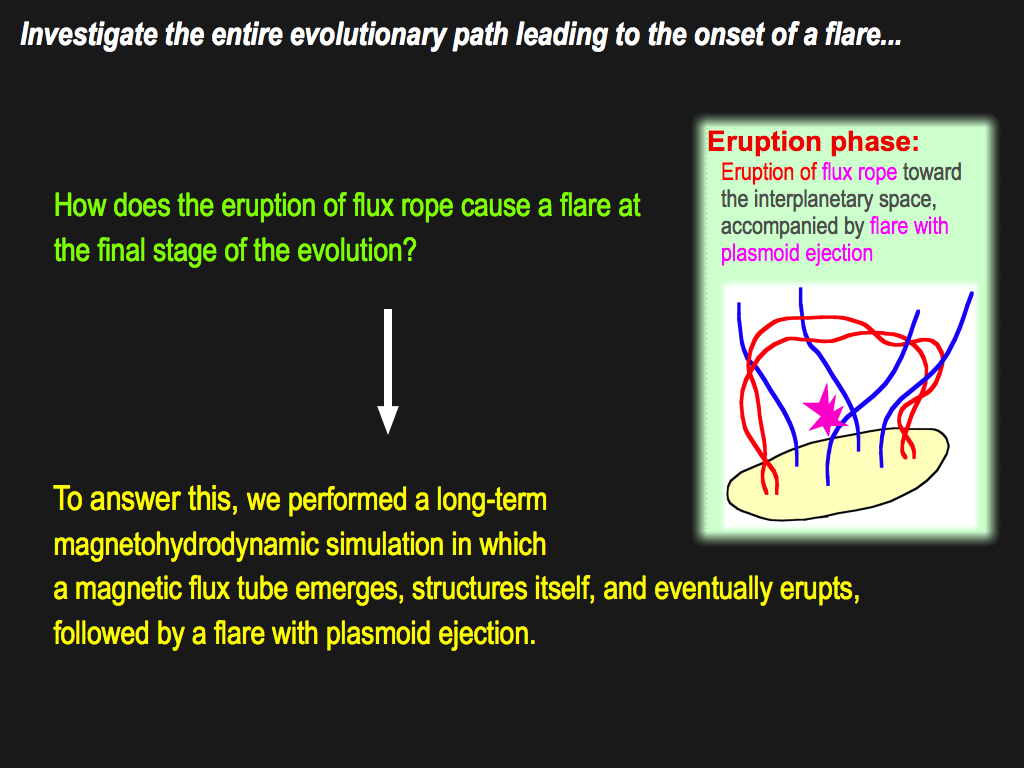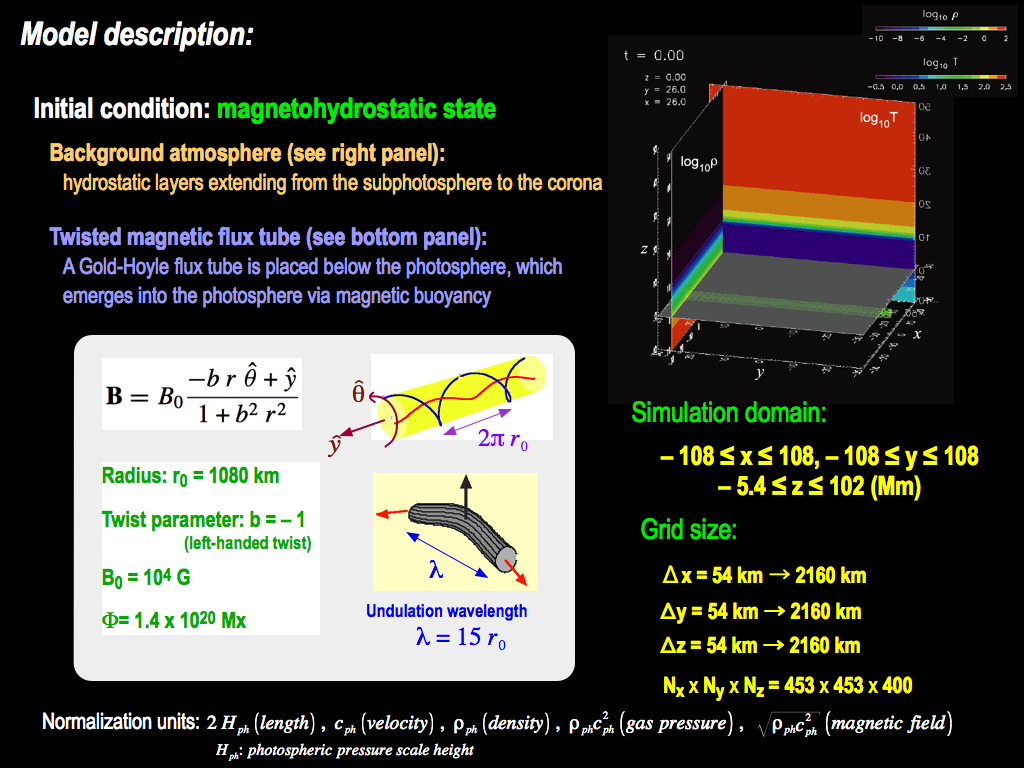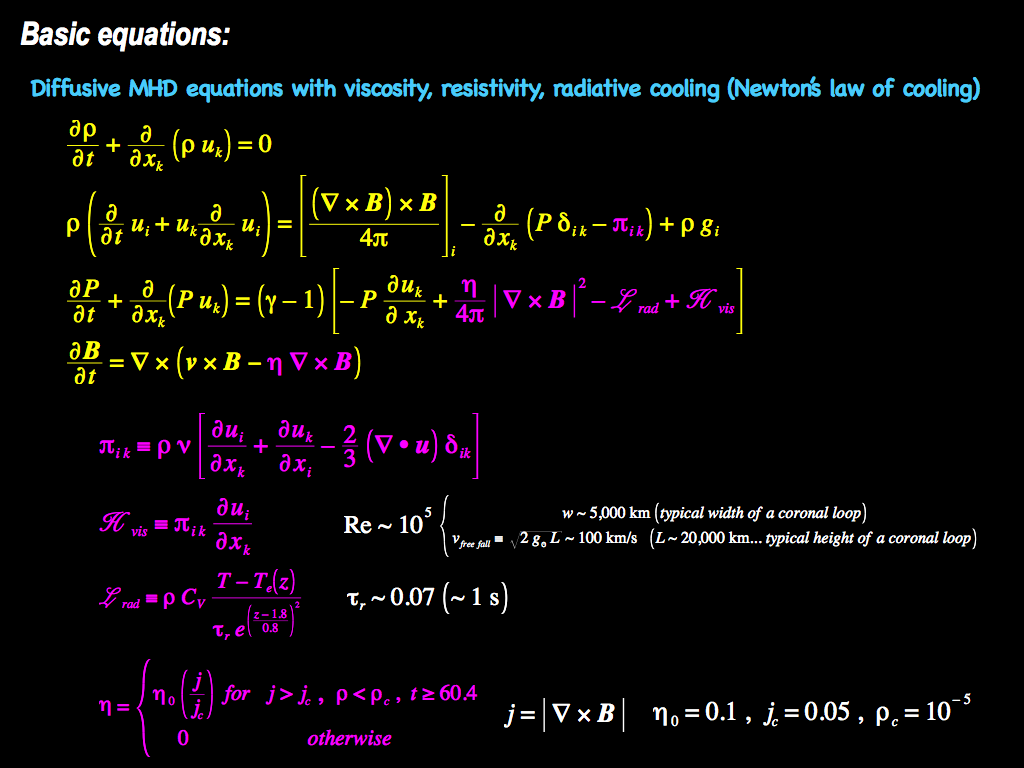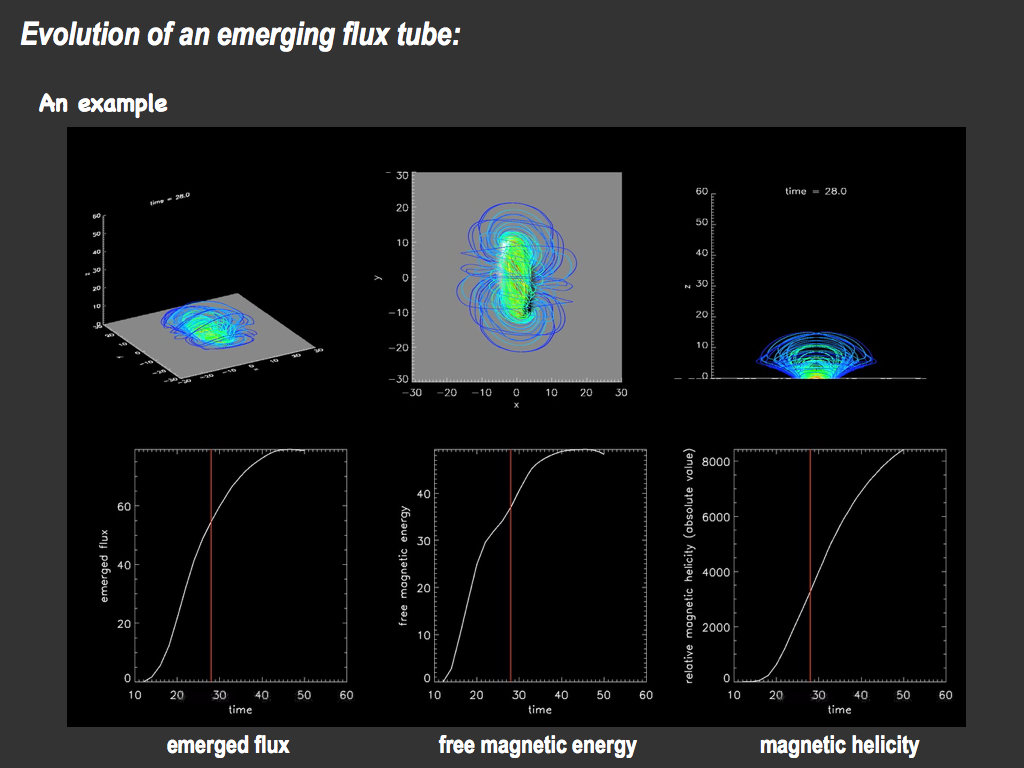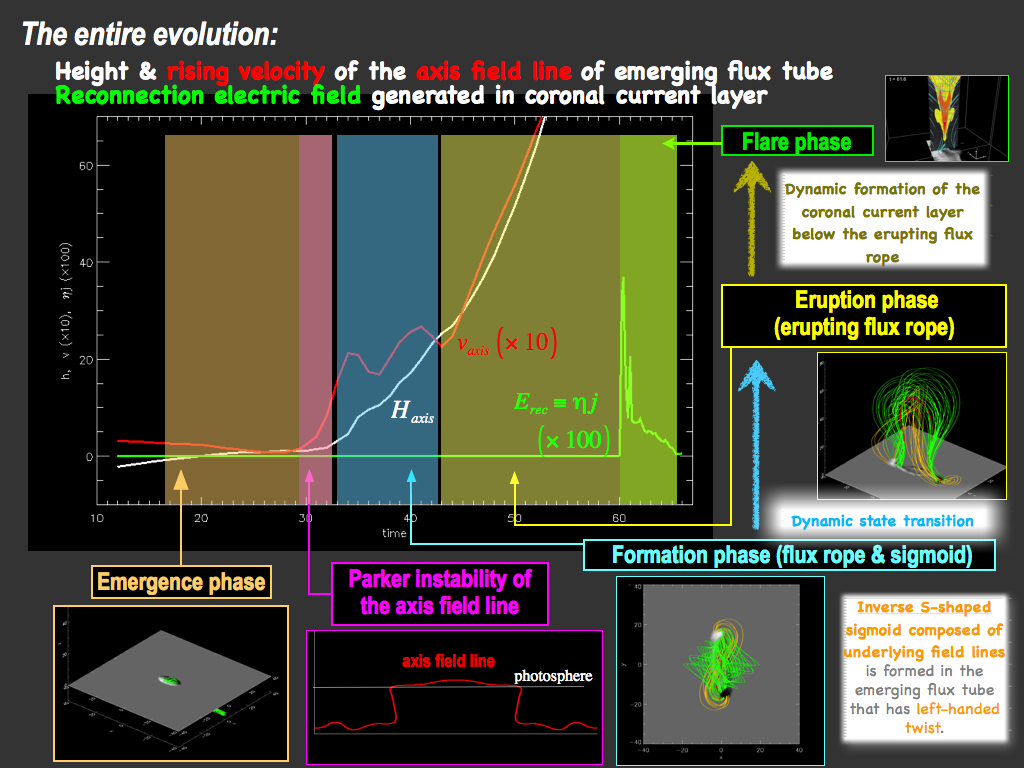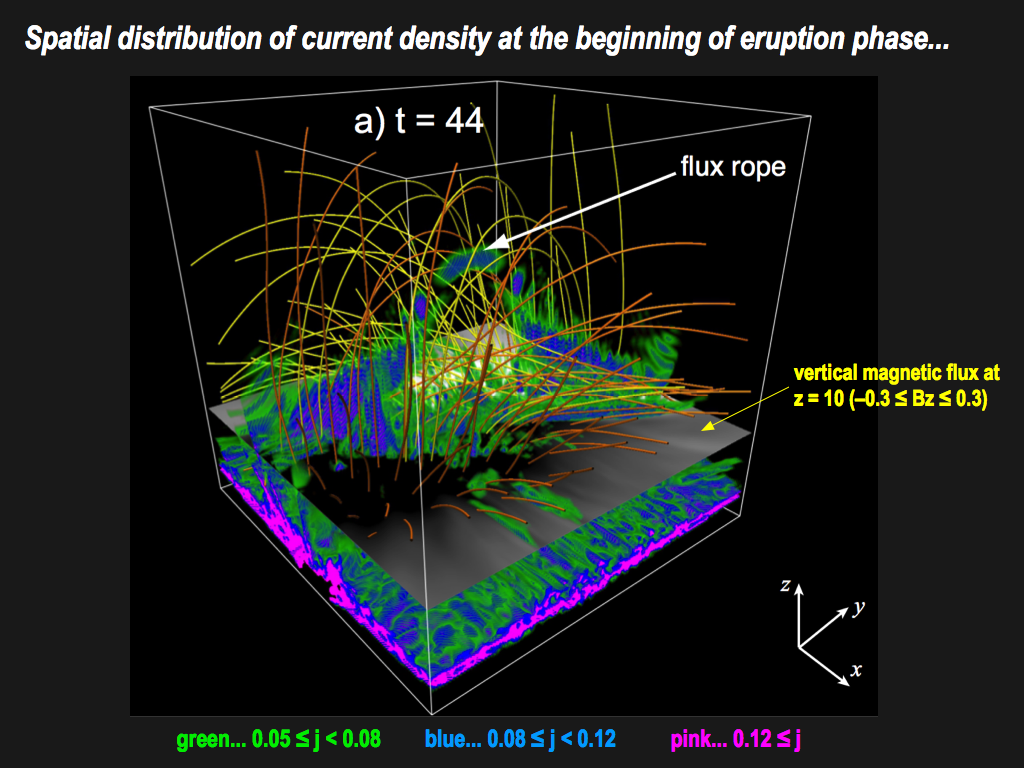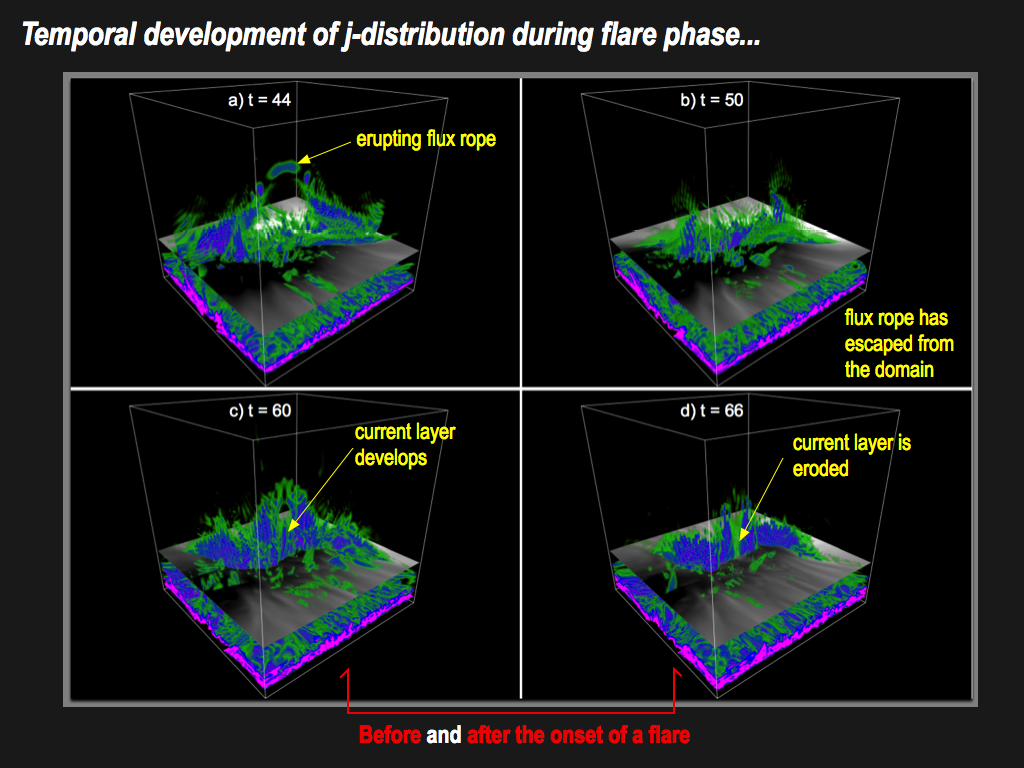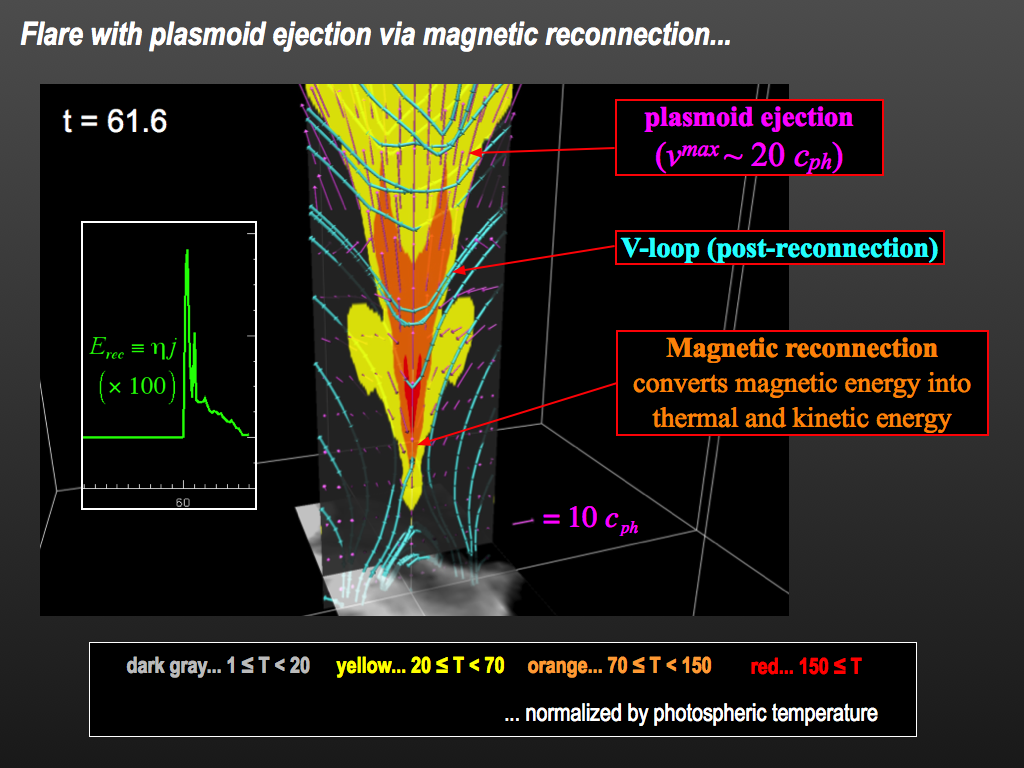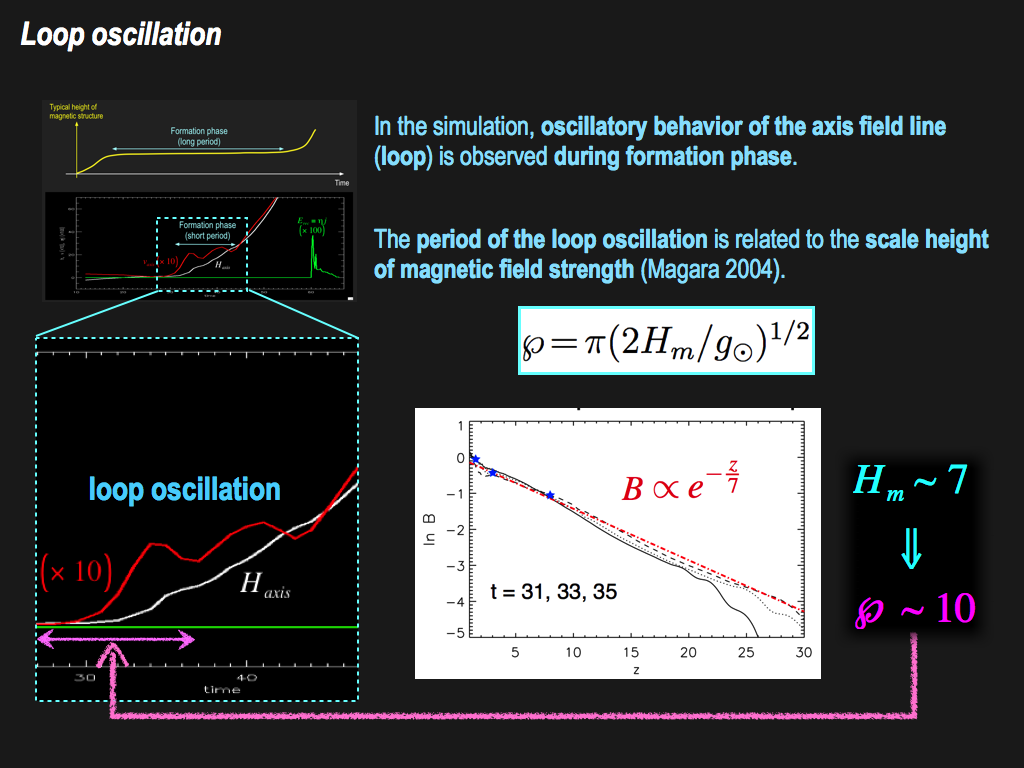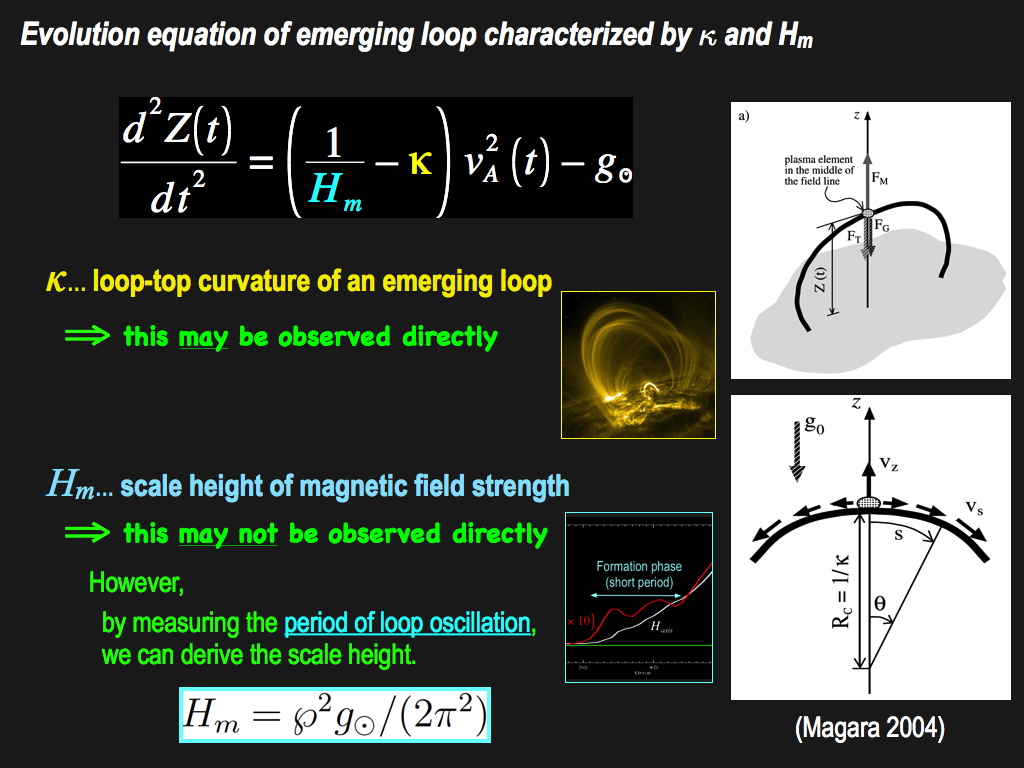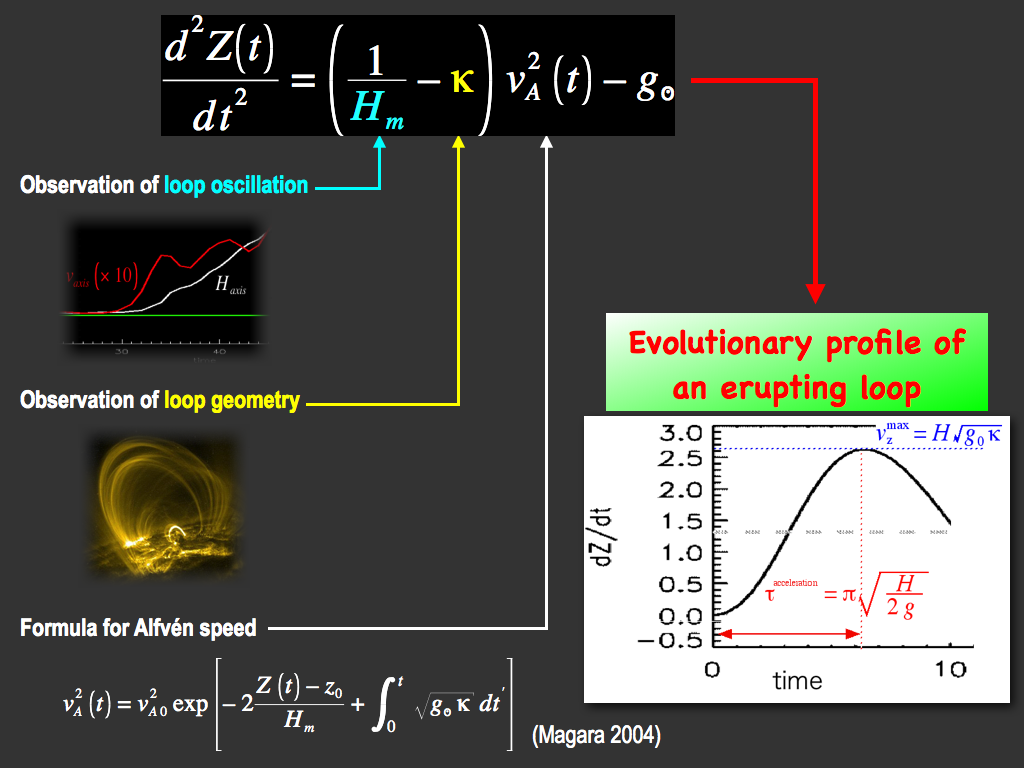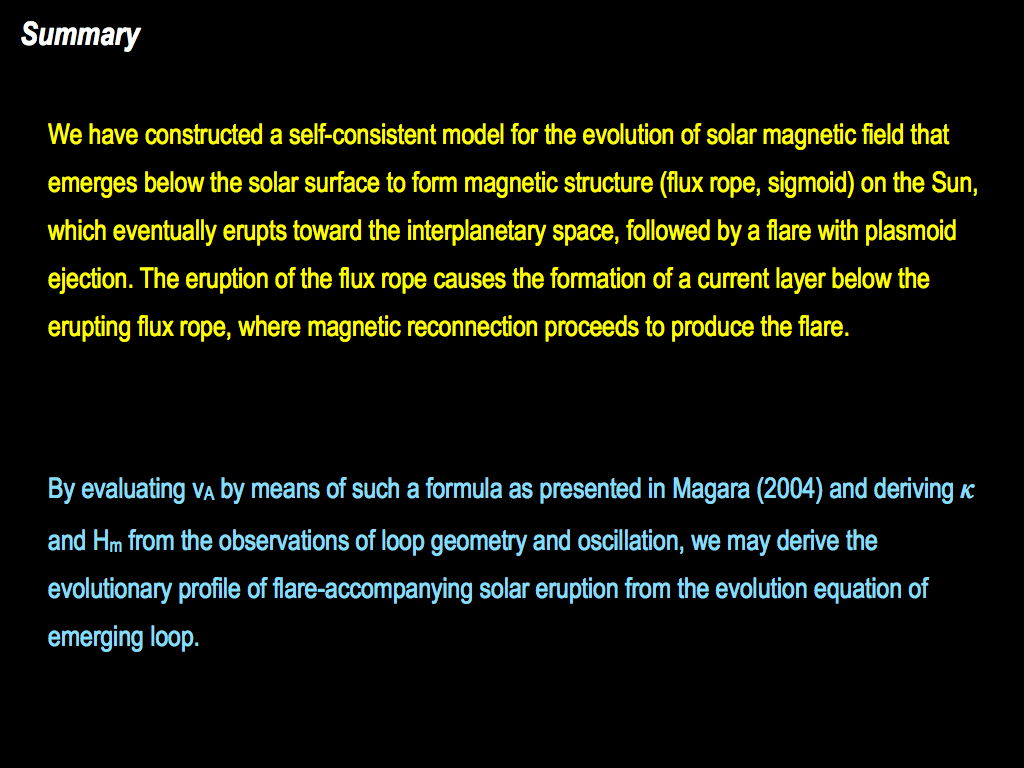MHD simulation for investigating evolutionary path of solar magnetic field that emerges, structures itself, erupts, and produces flare
We performed a long-term magnetohydrodynamic simulation to seamlessly reproduce those dynamic processes involved in
evolution of a solar magnetic field from its emergence to eruption. The evolution comprised the initial phase when
a twisted flux tube started to emerge below a solar surface, intermediate phase during which flux rope and sigmoid were formed in a solar corona, and final phase at which the flux rope erupted toward an interplanetary space, followed by a flare with plasmoid ejection.
Reference
Magara, T. 2015, PASJ, 67, L6
Magara, T.
2004, ApJ, 605, 480
